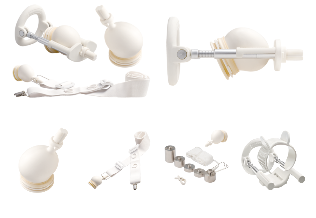
Doctors have been dealing with the problem of male enhancement for over a hundred years, and there is still no universal, safe and effective method. There are many products - from creams and sprays to pumps and surgeries - that often do not work or do not work. In addition, some of them have serious side effects, including erectile dysfunction.
Which penis is considered small?
The average size of a man's dignity is 12. 5‒15 cm long during erection with a circumference of 10 to 12 cm. At the same time, at rest, different male measurements can differ significantly.
In rare cases, genetic or hormonal problems can cause a condition called micropenia. Peyronie disease (curvature) and prostate cancer surgery can also reduce penis size.
At the same time, studies show that most men who want to undergo surgery to increase their manhood have an average penis size without deviating from the norm. The main reason they are not happy with the size is:
- seems to be the length or thickness of their penis to be less than most other men;
- it is difficult to calculate the size of your own genitals, especially if you do it while standing, from top to bottom (overweight and a large stomach can also distort perceptions);
- For some men, dissatisfaction is associated with mental disorders, which, according to one study, occur in most patients undergoing male enhancement surgery. They are also most dissatisfied with the outcome of treatment.
How to enhance the dignity of men without surgery?
- Weight. There is one safe and effective method of penis enlargement - losing extra weight. Urologists say that many men think that they have a small penis and are overweight. Weight loss will be followed by fatigue and constant tiredness. This does not actually increase the size, but the organs will look longer.
- Vacuum pump. The penis is placed in a special cylinder from which air is sucked out. The vacuum creates blood flow to the penis, making it slightly larger. The organ is then squeezed into a tight, round ring to prevent blood from flowing back. The main disadvantage of this method: its effect continues until the man removes the ring from the base of the penis. Also, using the pump for more than 20-30 minutes can cause tissue damage. This method is also sometimes used to treat erectile dysfunction, but there is no evidence of its effectiveness.
- Exercises. A large number of exercises can not increase manhood. However, when suspended from the penis (during rest), the weight can stretch the organs slightly. "You may have to carry a weight tied around the penis for eight hours a day for six months, " experts say. After all, a man is very lucky if his penis size increases by at least 1 centimeter. Risks include ruptured tissues and blood vessels.
- Tablets, supplements, ointments, sprays and creams. Supplements and topical agents usually do not work. "It is safe to say that this is all nonsense, " the doctor said.
- Elongation and stretcher. With the help of an extender or stretcher, you can enlarge the penis without the need for surgery, say a surgeon. But for this you need to wear the umbilical cord for about a year. On average, this method increases the length of the organ by 4 cm.
For those who prefer surgical methods than diet, liposuction will help you get rid of fat around the penis quickly. However, the effects of it will not last long if the man does not change his eating habits and begins to control his weight.
Male Enhancement Surgery: Price

The cost of penis elongation in the clinic depends on the type of surgery. The final amount is also influenced by the cost of additives (e. g. , prosthesis, extender), clinical reputation and physician experience.
Surgical methods of extending the penis and increasing its circumference (circumference) have been extensively performed since 1991. However, there are still not enough studies to accurately predict the outcome and risk of interventions. For example, a study at the Institute of Urology in London showed that only 35% of patients who underwent surgery to improve their manhood were satisfied with the results. Half of those who underwent the procedure again used the services of a surgeon.
Indications for surgery can be considered as a penis shorter than 10 cm in an upright position.
How penis enlargement surgery is performed
There are two major penis enlargement surgeries.
- Lengthens the penis. The name of the operation to enhance the dignity of men is ligamentotomy. The most common method involves cutting the ligament that connects the penis to the pelvic bone. This makes it possible to slightly enlarge the male penis - on average, no more than 3-5 cm. In fact, this operation does not lengthen the penis, but releases the normally hidden part of the organ. To prevent ligaments from growing in the same place, for a certain time a man, usually, it is recommended to wear a lengthening (it is better to use a stretcher immediately after surgery, and connect the lengthening after 3-5 months).
- Thickening (expansion) of the penis. For men who believe that their penis is too thin and too small in diameter, surgery is recommended to thicken the organ. Circles can be enhanced with the help of fat or patient implant tissue taken from other parts of the patient's body, as well as silicone implants or biogel identification. All procedures must be performed by a qualified professional at a medical facility. It is strictly forbidden to inject drugs under the skin, including petroleum jelly, etc. , at home. Such attempts lead to penile deformity, swelling, oleogranuloma and inability to have sex.
Surgery-related risks
Before taking out a loan for surgery to increase masculinity, doctors advise to think about possible risks. The most common side effects of elongation are:
- onset of infection,
- nerve damage,
- desensitization,
- difficulty getting an erection,
- scar.
Increased penis thickness can cause abnormalities on the surface of organs, deformities, rejection of inserted and transplanted materials and tissues, and sometimes even death.














































